
The article about whether to remove adenoids, about the methods of operation and its possible consequences.
The content of the article
- When you need to remove adenoids in a child: reading to remove
- Video: Ask the specialist - removal of adenoids
- When is it better and where to remove adenoids to the child?
- Adenoids are removed as children: ways to remove
- Video: Adenoid removal in children
- Is it painful to remove adenoids?
- What is adenoid endoscopy in children?
- Operation for adenoids in children under anesthesia laser: how is it going?
- Horrel pain after removal of adenoids: how to remove?
- Postoperative period after the removal of adenoids in children
- Temperature after removal of adenoids in children: what to do?
- Removed adenoids, and the nose does not breathe: what is the reason?
- After removing adenoids, the child snates: why?
- Snot and cough after removal of adenoids: what to do?
- Complications after removal of adenoids in children
- Can adenoids increase after removal?
- Adenoid removal in children: consequences
- Video: Endoscopic adenotomy
Adenoids - the problem is frequent. It is with them that doctors are most often faced - otolaryngologists. How to treat them? Details can be found here:
And when can not do without surgery?
When you need to remove adenoids in a child: reading to remove
The solution is necessary to remove adenoids, receive a otolaryngologist, after all non-surgical treatment methods are not simply inflamed, but impede the breath of adenoid vegetation difficult to breathe. Perhaps visits to the otolaryngologist will be somewhat before this decision is made.
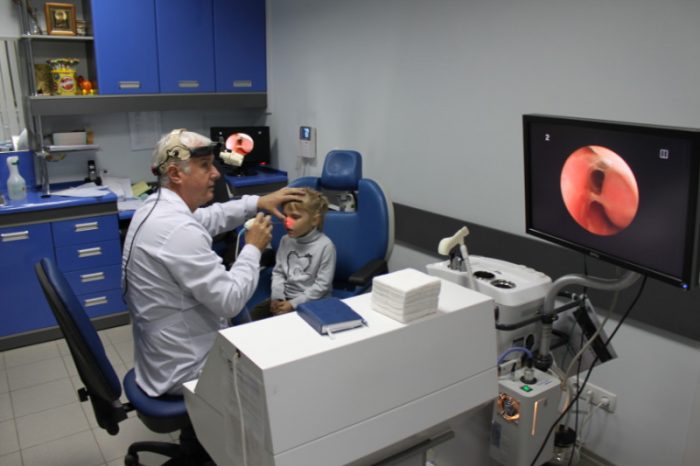
The operation to remove adenoids is carried out in the case when their conservative treatment is impossible.
Important: Pedianidectomy, as well as the operation to remove the sky almonds, at first glance, it seems harmless than any other. In fact, it belongs to the number of little pleasant. Therefore, if it is possible to avoid it and limit the therapeutic treatment, it will be the best way out. True, you need to recognize, sometimes without such operations, you can not do
The testimony of the urban removal of adenoids in the child is:
- The growth of adenoid tissue to such an extent that it overlaps the so-called couch before its middle (this is a thin bone plate, which is located behind the nasal partition). As a result, the nasal breathing becomes very difficult, sometimes impossible. The child may have oxygen starvation.
- Recurient inflammation of adenoids, an increase in their size, purulent raid on them (recurring adenoid).
- Therapeutic treatment of inflamed adenoids does not lead to a positive result, the degree of growth remains the same and does not decrease.
- Recurrent complications otitis after inflammation of adenoids.
- Snoring or even stop breathing at a sleeping child.
- In exceptional cases - the deformation of posture and jaw, bite disruption.
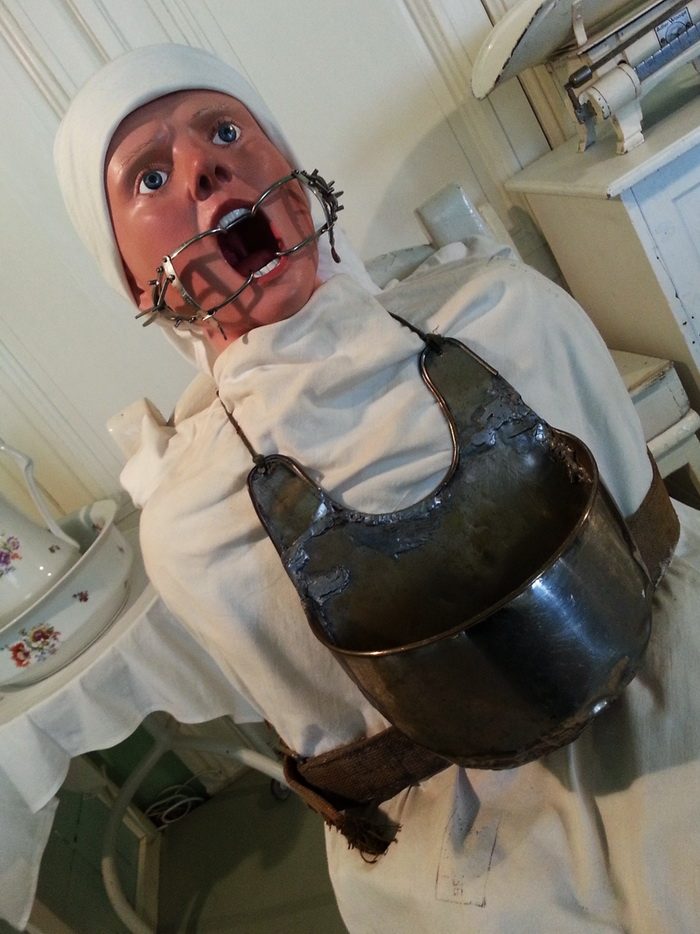
Surgically remove adenoids 2, and more often than 3 degrees.
VIDEO: Ask specialist - removal of adenoids
When is it better and where to remove adenoids to the child?
Adenoids at extreme testimony are removed in children aged 3, 5 to 10 - 12 years. At an older age, adenoid vegetation comes to normal, the need for such an operation disappears.
Some doctors consider unwanted operational interventions of this kind of children under 5, since:
- general anesthesia is needed, and this is not very good for the children's body;
- the child at the sight of blood (and the operation is associated with blood loss) and psychological injury may develop due to the traumaism of adenotomy operation
- the child is subsequently a weakening of immunity, since all the same adenoids are designed to perform a protective function in the body.
The operation to remove adenoids is carried out in specially equipped LOR-Cabinets or in the ENT-branches of the hospital. It does not take much time, even taking into account anesthesia.
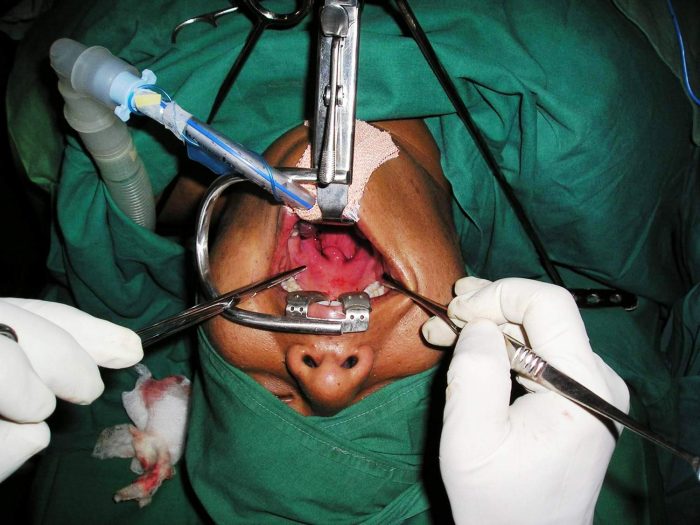
Denoidctomy to small children is carried out under general anesthesia.
Adenoids are removed as children: ways to remove
Although adenoidectomy lasts and not long, it is a difficult operation. If it is not performed using an endoscope, the doctor actually performs all the actions blindly.
Adenoidectomy are carried out:
- with the help of ordinary ENT tools through the mouth
- with the help of endoscope
- with a laser
- radio-salns
- using the cryodestruction method
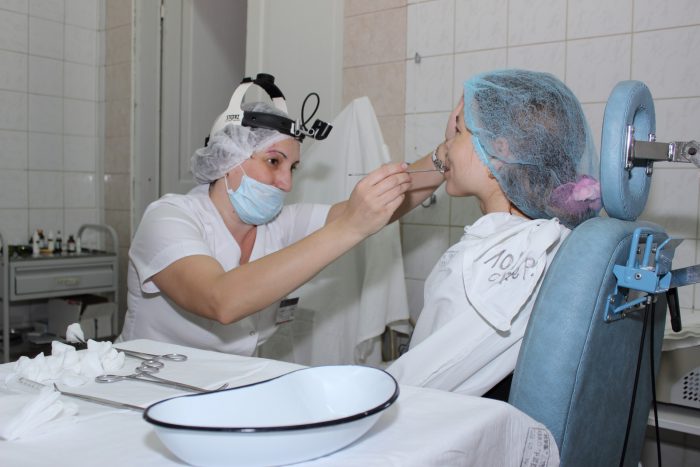
Removing adenoids through the mouth.
The most efficient and small-acting is the removal of adenoids with a laser. The advantages of this method are also high accuracy and sterility of operation, smaller bleeding than with a different form of intervention, the minimum recovery period after the operation.
VIDEO: Adenoid removal in children
Is it painful to remove adenoids?
If you do not use anesthesia, then adenotomy is a very painful operation.
With the use of a common or local anesthesia and with the use of soothing agents, injury to the child comes down to a minimum.
What is adenoid endoscopy in children?
Endoscopic study of the nasopharynx is carried out with a diagnostic purpose if a child:
- frequent sinusites and rhinitis
- polyps nose
- ears Convenience and Hearing Reduction
- selection of nose
- violation of nasal breathing
- snore during sleep
- incomprehensible headaches
- the function of the hearing pipe is broken
- during periods before- and after the operation of adenoidectomy
With the help of an endoscope, a otolaryngologist assesses the degree of growth of lymphoid tissue, its coating (mucous membrane, purulent), the presence in the nasopharynx of spikes and partitions, other anatomical and pathological features of the nasopharynx.
Endoscope is a special tube equipped with thin fiber. On the one hand, there is a miniature lens on the tube, the other side is connected to the monitor.
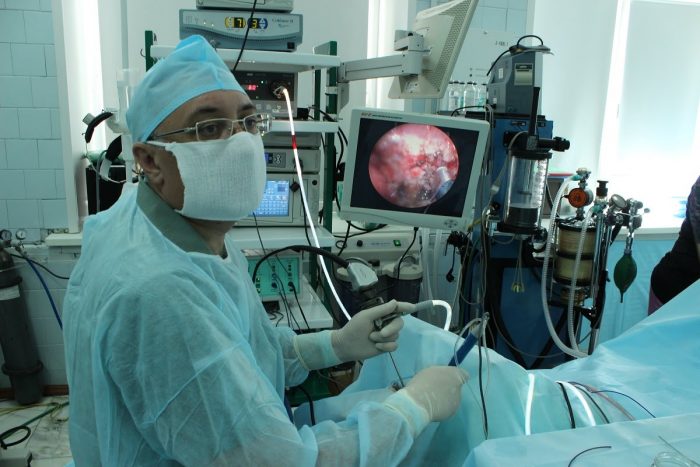
Endoscopy of adenoids.
What sees the lens when the tube is introduced into the nasal cavity appears on the computer. The image is extremely detailed. The result of the image is fixed using the photo, and this photo is issued to the patient as a result of the study.
An endoscopic study of the nasopharynx is carried out with spraying anesthetic substance into the nose, although it is not a painful study.
Operation for adenoids in children under anesthesia laser: how is it going?
The laser beam is a much more accurate tool than the scalpel, while it is more directed, with its use, the operation is almost bloodless.
The laser is used by methods:
- Vaporization of small adenoids. Thus, adenoids are rather smoothed, and not deleted
- Coagulation method when a child needs to remove large adenoidal growths
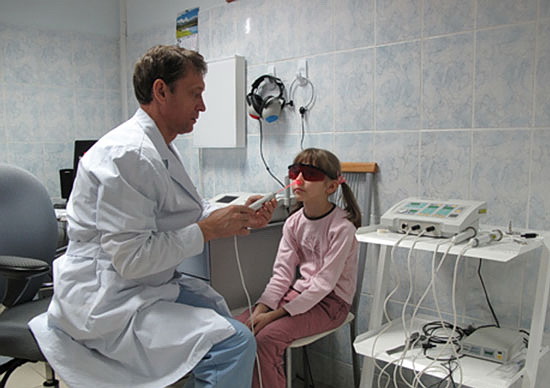
Laser removal of adenoids.
When surgery, the focused laser beam is sent by the doctor from the body of the adenoid before it is founded.
With such an operation, local anesthesia is used, it is quite enough for anesthesia, because, among other things, the laser has an analgesic effect. Operation itself lasts a few minutes.
Horrel pain after removal of adenoids: how to remove?
After removing adenoids, the child can still hurt for a child, the pain can be given in the ear. This is quite explained, because the throat was injured during the operation, and the ear-nose, as you know, are related.
Therefore, most likely, a doctor who annoyed an operation will warn the child's parents about possible sore throat in a child and prescribe a suitable medicine.
On the forums dedicated to this problem, parents share how they independently have come out of such a situation. Many of them advise to give a child Nurofen.
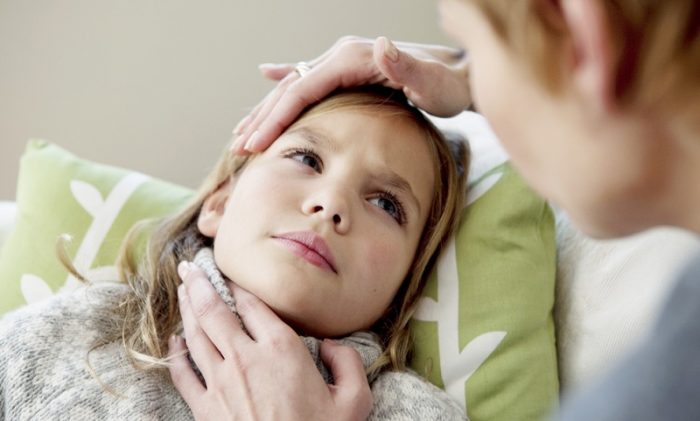
After adenoidectomy, the child may have pain in the throat.
Postoperative period after the removal of adenoids in children
After the operation of adenoidectomy, the child is some time a special mode of classes and recreation, nutrition and motor activity is necessary.
- Giving a child home from the hospital, it is necessary to create comfortable conditions to him, sufficient air ventilation and, at the same time, warm air in it. The light should be muted.
- Perhaps the first time after the operation will need to apply a cold compress to the nose area to reduce the edema of the nasopharynx.
- Eveniness may occur on centuries, and if this happened, it is recommended to stop the eyes of a 20% albucid solution.
- In the first few days after the operation, the child needs regularly (in the morning and in the evening) temperature measurement. Temperature above 38 degrees means that the child should be made of antipyretic agents.
- The child's nutrition after adenotomy should be the wiped first week, cooked on a couple or invested, as it will hurt him.
During this period, the child shows the rubbed cereals, steam meat or vegetable cutlets, kisins, compote. Products offered by the child must be not hot and not cold, slightly warm so as not to irritate the throat. - Movement, sport, physical education for a couple of weeks after the operation should be limited. You also need to avoid hot baths and outdoor sun.
- The doctor will most likely prescribe postoperative treatment that should not be neglected. The treatment will enter the nose with thorough drops, rinsing and so on.

After removal of adenoids, the child is shown a vacation.
Temperature after removal of adenoids in children: what to do?
After the operation, the elevated temperature may be held for several days. Although this is a completely normal phenomenon, but still, you need to follow it. In the event of its unforeseen increase, the doctor may assign antibiotic therapy. Reception of antibiotics is a common therapeutic treatment after surgery.
Removed adenoids, and the nose does not breathe: what is the reason?
The first is the possible reason that after removal of adenoids, the nose is still not breathing, which can last up to two weeks. In order to reduce it and prevent the doctor attributes drops, washing and irrigation of nasopharynses.
If a child, two weeks after the operation, still does not breathe the nose, perhaps the swelling of the mucous meal has the cause of an allergic nature.
After consulting with the doctor who leads and knows the history of the child, tropical steroids will be appointed, which are anti-inflammatory hormones of local action. They will need to take two or three months.
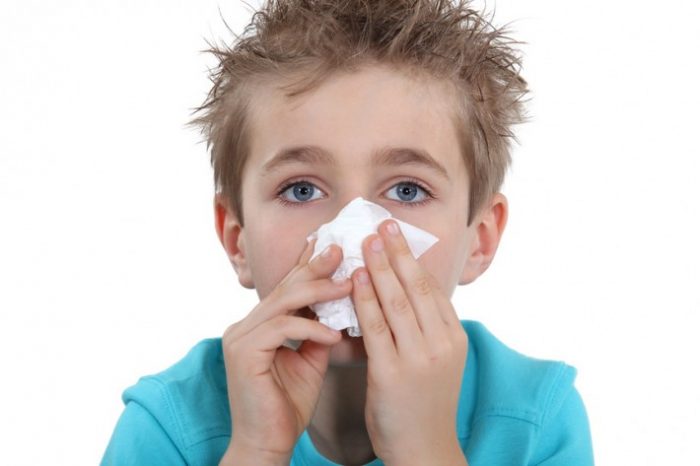
After removal of adenoids, a child may not breathe a nose for some time.
After removing adenoids, the child snates: why?
If the child was removed adenoids, and he continues to snore, then the causes of this can be:
- as a result of the operation, adenoid fabric was not completely removed
swelling and concluding of nasal moves - increase almonds due to operation or their inflammation
- inflammation and thickening of the sky
- delayed mucous selection on the rear wall of the pharynx
To clearly determine the cause of snoring, you need to visit the doctor. Unfortunately, if the adenoid tissue was not completely removed, perhaps it will be necessary to pass the operation again.
Snot and cough after removal of adenoids: what to do?
Cough and snot in a child who suffered adenoidectomy may occur again due to mucus flowing along the rear wall of the pharynx. All time will take place in itself. Parents to speed up this process can do special breathing exercises with the child.
If the cough is preserved more than two weeks, you need to contact the doctor.
Complications after removal of adenoids in children
Unfortunately, after removal of adenoids, complications are possible, the most caimate of which is the recurrence of the growth of adenoids. In this case, it is necessary to make an operation again.
Other possible complications include:
- nasal bleeding
- headache
- miscellaneous viral infection due to the weakening of immunity due to surgery
- escapes mucous
- runny nose, cough, sore throat, which, however, in time pass, not causing the body of special harm
The doctor, given the characteristics of the child and the consequences of the operation, will select the necessary treatment if the need arises.
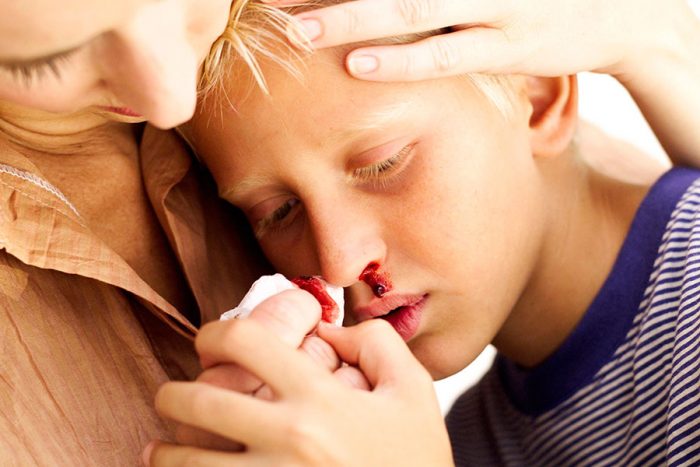
Nasal bleeding is one of the complications of adenoidectomy.
Can adenoids increase after removal?
Unfortunately, this option is possible. Especially often the relapse happens at allergies.
Adenoid removal in children: consequences
The consequences of the operation to remove adenoids can and are most often positive. The child begins to feel much better.
Negative consequences include recurrence of adenoid growth, psychological injury after surgery and, to a certain extent, some weakening of immunity.
